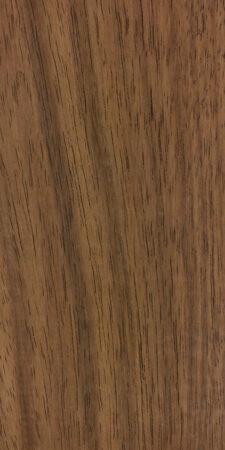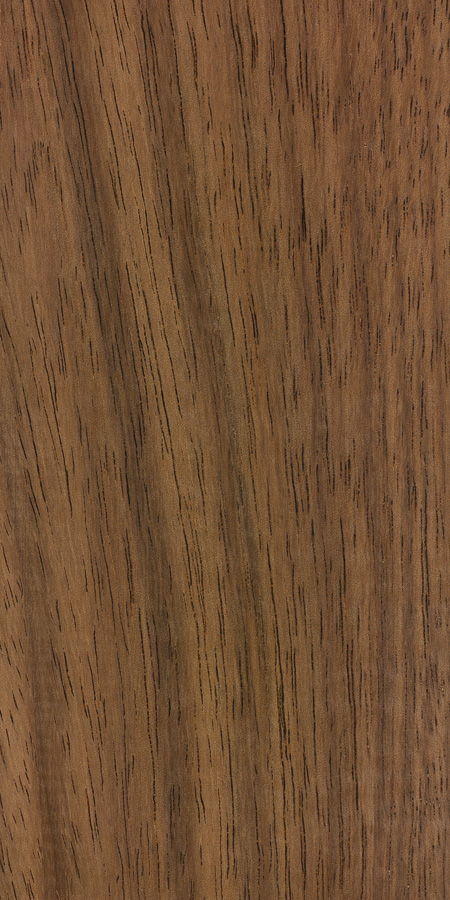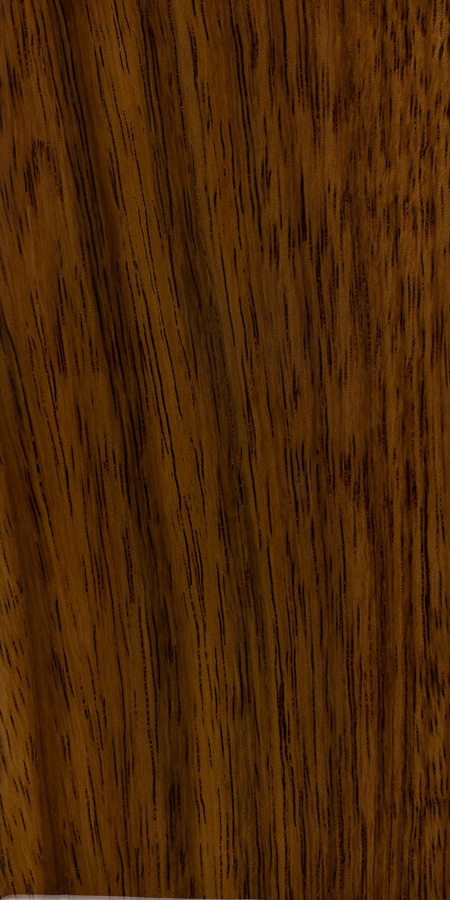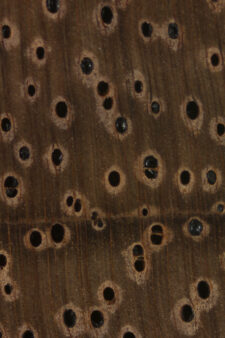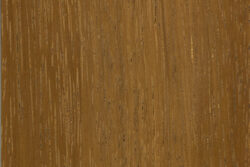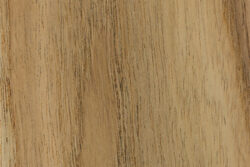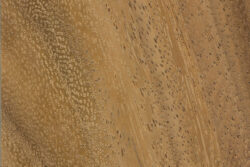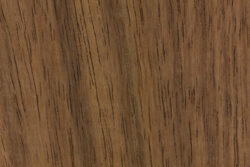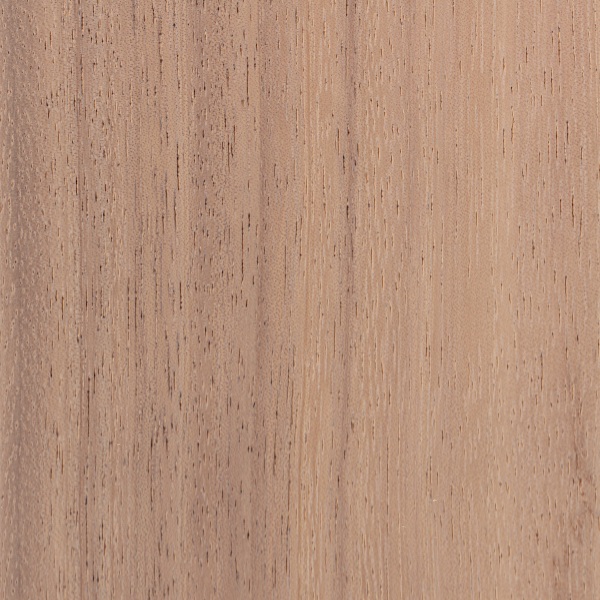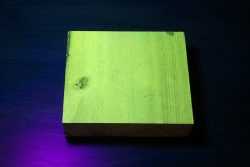Common Name(s): Black siris, bhilwara, albizia, Ceylon rosewood
Scientific Name: Albizia odoratissima
Distribution: Native to central and southern Asia; also introduced to East Africa
Tree Size: 65-100 ft (20-30 m) tall,
2-3 ft (.6-1 m) trunk diameter
Average Dried Weight: 47.4 lbs/ft3 (760 kg/m3)
Specific Gravity (Basic, 12% MC): .64, .76
Janka Hardness: 1,630 lbf (7,260 N)
Modulus of Rupture: 13,980 lbf/in2 (96.4 MPa)
Elastic Modulus: 1,707,000 lbf/in2 (11.77 GPa)
Crushing Strength: 8,140 lbf/in2 (56.1 MPa)
Shrinkage: Radial: 4.0%, Tangential: 8.1%,
Volumetric: 12.3%, T/R Ratio: 2.0
Color/Appearance: Heartwood is medium to dark reddish brown, frequently with bands of lighter and /or darker colored wood. Contrasting sapwood is pale yellow. Heartwood color tends to darken with age.
Grain/Texture: Grain is usually interlocked. With a uniform coarse texture and good natural luster.
Rot Resistance: Rated as non-durable; dry wood is reported to be resistant to termites.
Workability: Moderately easy to work, though interlocked grain can cause tearout during surfacing operations. Has a moderate blunting effect on cutters. Turns, glues, and finishes well.
Odor: No characteristic odor.
Allergies/Toxicity: Although severe reactions are quite uncommon, black siris has been reported to cause respiratory irritation. See the articles Wood Allergies and Toxicity and Wood Dust Safety for more information.
Pricing/Availability: Not commonly exported to North America (except as turning blanks). Lumber in longer and wider sizes, as well as veneer sheets, are available regionally within its natural range. Expect prices to be in the mid to upper range for an imported hardwood.
Sustainability: This wood species is not listed in the CITES Appendices, and is reported by the IUCN as being a species of least concern.
Common Uses: Furniture, veneer, tool handles and other turned objects.
Comments: Sometimes sold under the trade name bhilwara, so named for the city in India, presumably where the wood was harvested. It’s also known by the name Ceylon rosewood, though it is not a true rosewood in the Dalbergia genus.
Within the commercial species of Albizia, black siris is one of the hardest and heaviest woods in the genus. Perhaps correlated, it also tends to have the darkest heartwood color as well.
Images: Drag the slider up/down to toggle between raw and finished wood.
Identification: See the article on Hardwood Anatomy for definitions of endgrain features.
Porosity: diffuse porous
Arrangement: solitary and radial multiples
Vessels: large to very large, few to very few; dark brown colored deposits occasionally present
Parenchyma: vasicentric, lozenge, confluent, and banded (marginal)
Rays: narrow to medium; normal spacing
Lookalikes/Substitutes: Appearance is similar to afzelia, another tropical hardwood with similar distribution. In addition to heartwood fluorescence (see notes below), Albizia species tend to have more color variation and striping, as well as being lighter in weight when compared to Afzelia species.
Notes: Albizia stands as one of the few genera with a wide distribution spanning different continents where the heartwood of all species consistently fluoresces under blacklight. (This is in contrast with Afzelia, where the wood is fluorescent much less consistently and not as strongly.) A lack of fluorescence in the heartwood would generally rule out Albizia.
Related Content:

